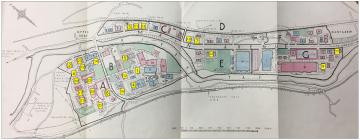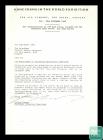Gellir lawrlwytho cynnwys at ddefnydd anfasnachol, megis defnydd personol neu ar gyfer adnoddau addysgol.
Ar gyfer defnydd masnachol cysyllwch yn uniongyrchol gyda deilydd yr hawlfraint os gwelwch yn dda.
Read more about the The Creative Archive Licence.
Disgrifiad
This audio clip is from an oral history interview with William Richard Williams recorded by the Imperial War Museums on 24 May 1995. In the clip, William talks about entering Bergen-Belsen Concentration Camp
William Richard William – a short biography.
William Richard Williams was born in 1920 and attended Llandaff Cathedral School in Cardiff. After obtaining an apprenticeship with the Austin Motor Company, he joined the Royal Army Service Corps in 1939 and was commissioned as an officer in 1941. He participated in the Normandy landings in June 1944 and was one of the first British soldiers to arrive at the liberation of Bergen-Belsen Concentration Camp in northern Germany in April 1945. He first entered the camp with an SS escort [the Schutzstaffel (SS) was the paramilitary organisation responsible for administering the Nazi concentration camps and extermination camps] before it was transferred to Allied control a few days later. Although not an extermination camp, around 50,000 inmates perished at Bergen-Belsen from 1941 to 1945 due to overcrowding, mistreatment, disease and hunger. One of them was the diarist Anne Frank, who died in early 1945.
Transcript
We got there, and there were no signs of anything at all, it was just a…an area, a small lane leading off into a wood. But fifty yards down that little cutting, there was a German sentry box, the black and red and white stripe, with a lift pole, and a Hungarian soldier. Well, we were told later he was Hungarian, a funny looking soldier, in so...sand uniform, putties and a rifle slung across his back. He just lifted the pole and waved us through.
[…]
We went, I and my two SS went through the gate into the camp proper and it was something which, a sight that I will never forget. I think first of all was…it was just a series of barbed wire, high barbed wire fences, huts on the left-hand side. There were bundles all over the main concourse—which was just dry earth, there was no grass anywhere—and there were just bundles, it looked like rags but turned out to be dead inmates. We were told to refer to the inmates as DPs – Displaced Persons. We had no knowledge who they were, where they came from, nationality, sex, or religion. And as we went in further, then the stench of the whole place came at me, coupled with the fact that there was a astrid [sic] haze hanging over the camp, formed from the inmates setting fire to their straw palliasses and wooden so…and wooden floorboards, anything they could make to burn, and it seemed to hang as a haze over the whole camp. There were inmates, or DPs, hanging on the wires, fallen beside it, grotesque positions, and just, you just had to pick your way through them. Two were walking and came towards us, and the SS, my escort, just shot them.
Source.
Imperial War Museum, Oral history interview with William Richard Williams, 24 May 1995 [accessed 17 August 2022]
Depository: Imperial War Museums.





Oes gennych chi wybodaeth ychwanegol am yr eitem hon? Gadewch sylwad isod
Sylwadau (0)
Rhaid mewngofnodi i bostio sylw